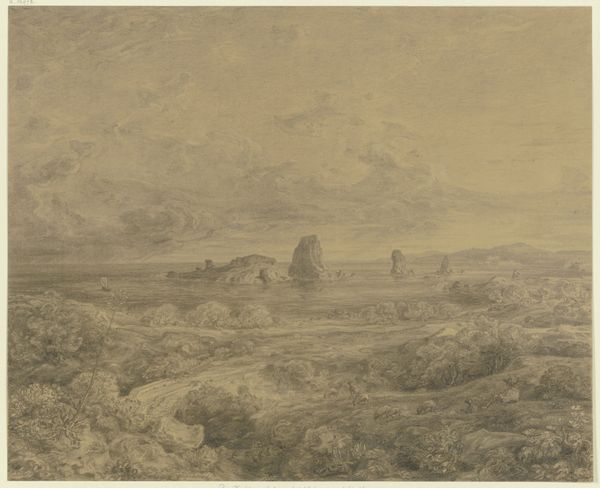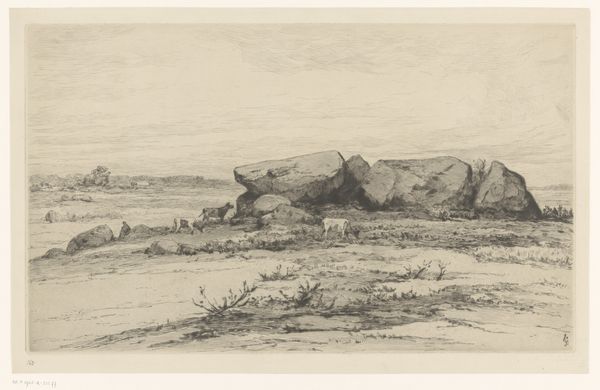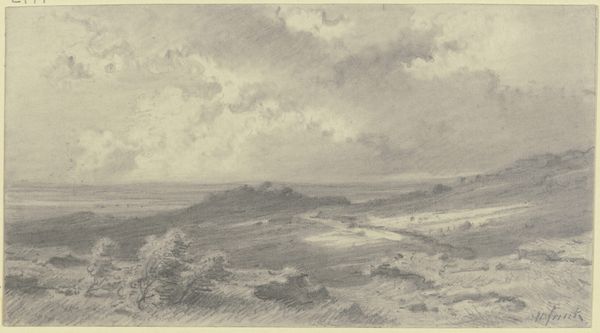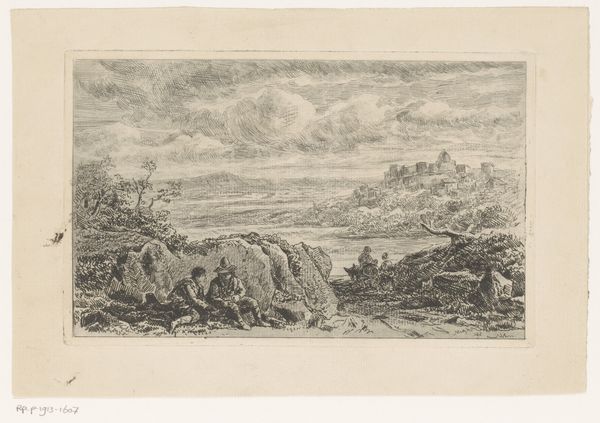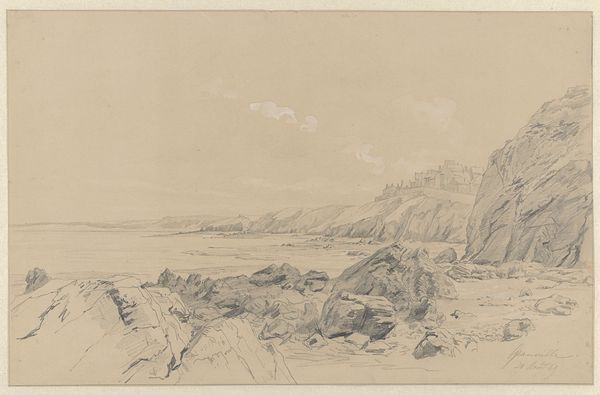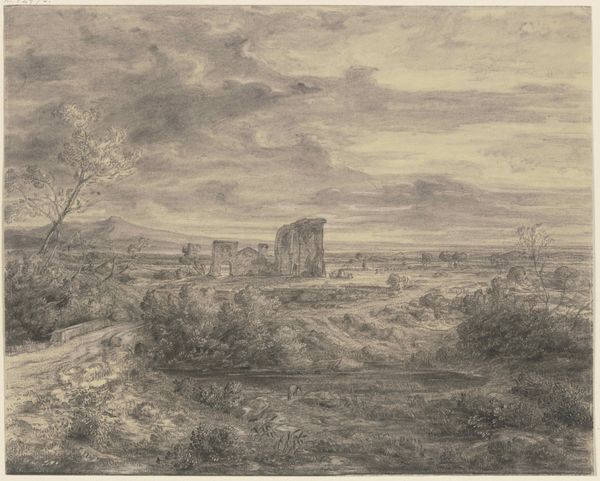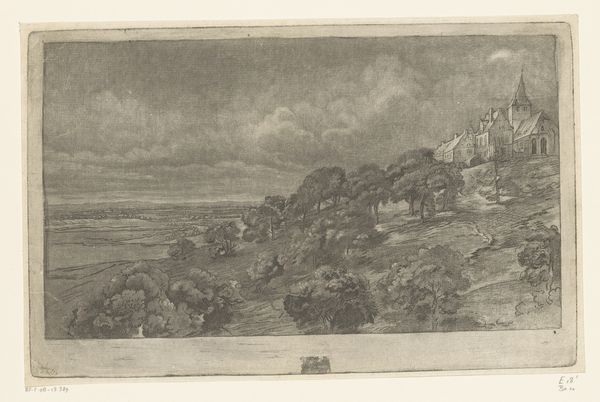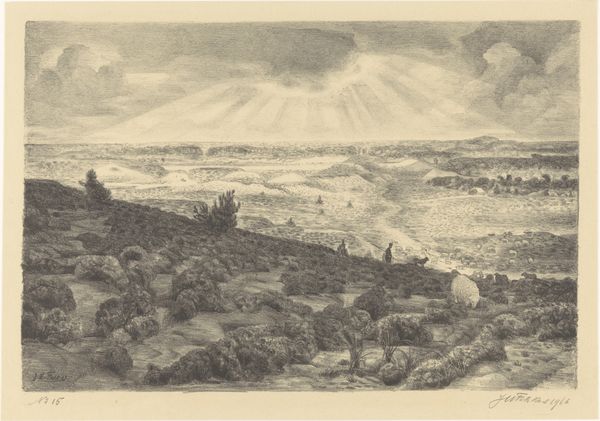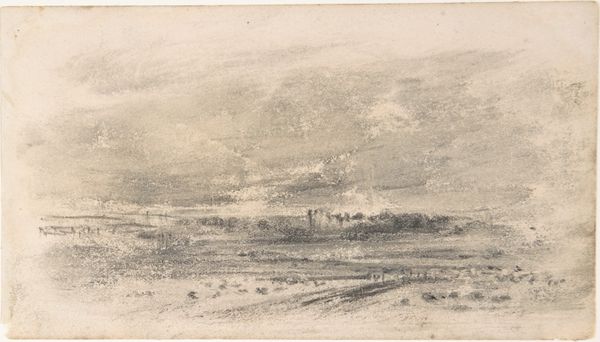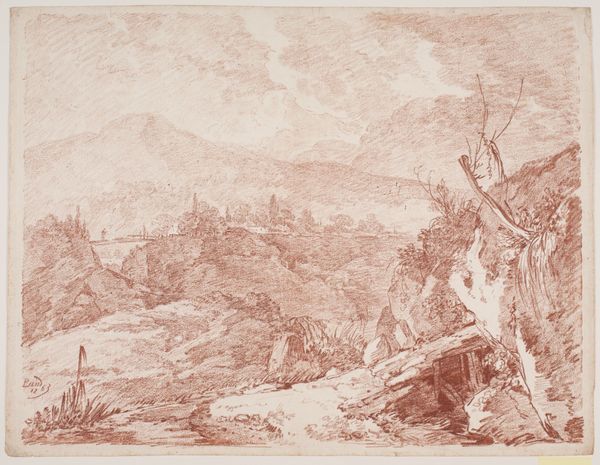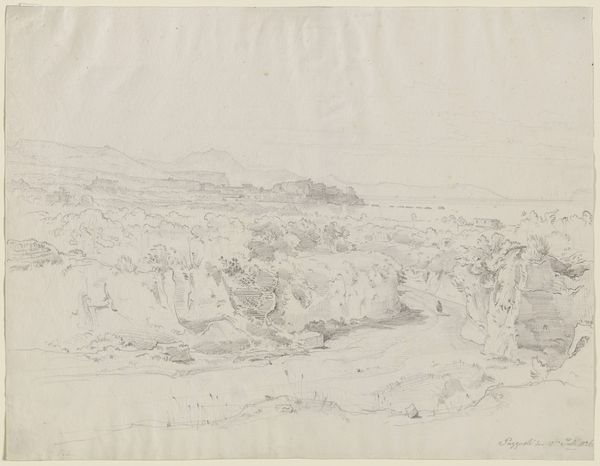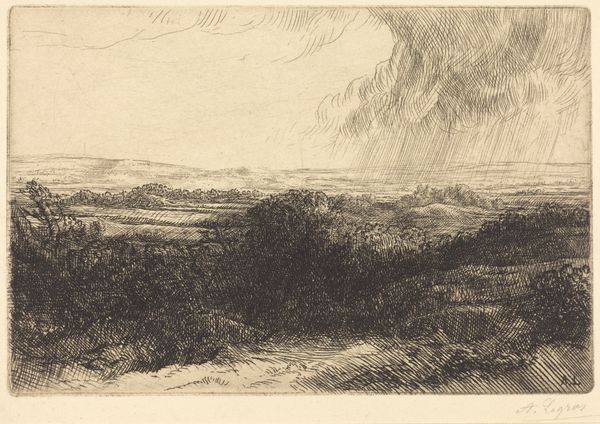
drawing, ink, pencil, chalk, graphite, charcoal
#
pencil drawn
#
drawing
#
16_19th-century
#
pencil sketch
#
landscape
#
charcoal drawing
#
ink
#
pencil drawing
#
pencil
#
chalk
#
graphite
#
charcoal
Copyright: Public Domain
Editor: This is "Die Zyklopenfelsen bei Sciacca," or "The Cyclopean Rocks near Sciacca," by Ludwig Metz. It's rendered with chalk, graphite, charcoal, pencil, and ink. Looking at it, I’m struck by the bleak, almost desolate mood. What do you see in this piece? Curator: I see a powerful statement about the relationship between landscape and power. Consider the title – Cyclopean rocks. Cyclops, giants, the original inhabitants dispossessed by a new order. Metz's choice to depict this site, likely Sicily, opens up conversations about colonialism and land appropriation. How does the choice of medium—drawing, with its inherent ephemerality—contribute to this discourse? Editor: I hadn't considered that. The fragility of the drawing does make it seem transient, as if the land itself is being erased. But why focus on the rocks themselves? Curator: Precisely. Rocks, seemingly permanent, become symbols of resistance and a reminder of a history often overlooked. Think about the socio-political context of the time. What voices were missing from the dominant narratives of landscape art? What is revealed by what is *not* represented in the frame, too? This connects directly to modern conversations of identity, belonging and political power today. Editor: So, the drawing is not just a depiction of a landscape but a commentary on the power dynamics embedded within it. Looking at it again, I notice the lack of human presence besides that tiny figure. The rocks are dominating. Curator: Yes, their silent watch represents enduring legacy and silenced voices that prompt us to re-evaluate our history. Editor: I never thought a landscape could carry so much weight. This makes me want to seek out the missing narratives of every artwork. Thank you! Curator: A keen interest to decolonize landscape art – wonderful! The beauty of art history lies in these reinterpretations, challenging what we think we know.
Comments
No comments
Be the first to comment and join the conversation on the ultimate creative platform.
